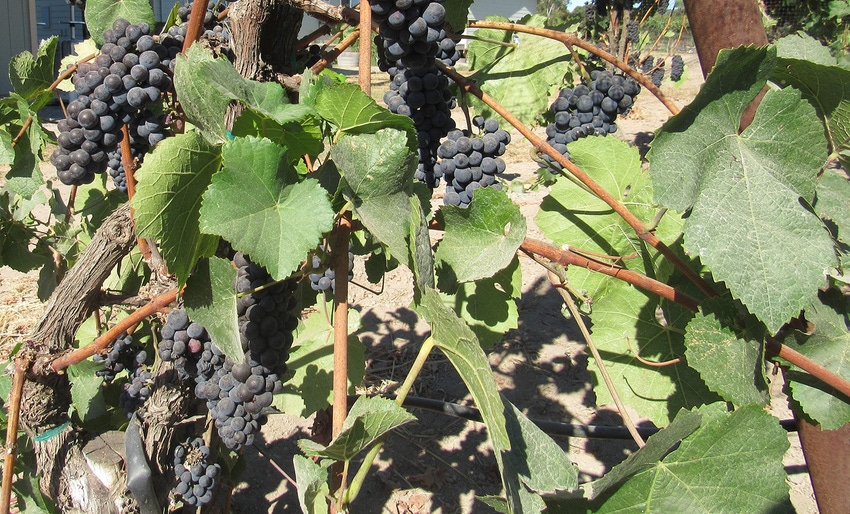
From East Coast to West Coast, there are just some things that remain the same — like cluster thinning grapes to achieve yield and quality goals.
“Crop load management is one of the most critical practices growers can do, getting rid of ‘non-count’ shoots from adventurous buds that lead to excess crop and canopy shading,” says Purdue University horticulturist Bruce Bordelon, author of the Facts for Fancy Fruit newsletter for fruit growers.
“Growers typically select from 40 to 60 nodes per vine during dormant pruning. That equates to five to six shoots per foot of row and that’s generally considered optimum density,” he says. “It’s easier done when shoots are short and tender and not firmly attached to the vine. Later, the shoot attachment toughens and may need to be hand cut.”
On the West Coast, Patty Skinkis, Viticulture Extension Specialist at Oregon State University, notes that shoot thinning is done early season while cluster thinning happens about lag phase. She refers to thinning as growers modifying vine balance of fruit to vegetative growth to ensure certain cultivar fruits ripen adequately.
“The number one reason for adjusting a crop is to meet a contract set for X tons per acre — if you’re over that amount and need to reduce total yield, cropping is one answer,” Skinkis says. “Most cluster thinning is done during the lag phase when growers can estimate how much crop they’ll have in the field.
“Another reason may be that vines can’t handle the amount of crop and some needs to be dropped for physiological reasons to ensure the plant will not be overstressed and fruit will ripen appropriately,” she says.
When to thin also varies based on different cultivars in different regions with timing based both on berry development stage and desired outcome.
“The timing of when it’s done changes by region and the extent of cluster,” Skinkis says. In Oregon, the premium tier wine grape is usually more intensely managed and growers have a desired tonnage they’re looking for, targeting one to one and a half pounds per linear foot, according to Skinkis' research trials.
The obvious question here is, what happens if you don’t thin?
“To not do so could be an economic decision or a plant health decision, but there are ramifications. If the vines are a heavy-yielding variety that requires constant tending, a lack of thinning could overtax the plant and there could be an impact on both plant growth and plant health long term," Skinkis says.
Reasons for crop-thinning
“There are both physiological reasons and economic reasons for crop thinning, all dependent on the cultivar being grown at a specific price point,” Skinkis says. “Research at OSU has shown that if we don’t crop, from the standpoint of disease or fruit composition at harvest, there’s little impact on the vine. The argument can be made that with some cultivars, especially in humid climates where it’s harder to deal with certain fungal diseases like vitritis, cluster or crop thinning helps reduce disease from the standpoint of not having overlapping clusters.”
The level at which to reduce crop should be based on the vine’s capacity to ripen fruit to a given standard within the environment in which it is grown. Thinning to various levels has been found to hasten fruit ripening, increasing sugars and color (anthocyanins), prior to veraison, again, dependent on cultivars.
Considerations need to be made for weak and compromised vines due to water stress, virus, or nutrient imbalance. Likewise, despite cluster thinning, overly vigorous vines can be problematic by resulting in under-ripe fruit.
Like most battles, “know your enemy” is a good slogan. OSU researchers note that “the best way to determine appropriate crop levels requires experience with a given cultivar and vineyard block over time, referencing detailed records of previous crop thinning practices. The starting point for determining crop adjustment is understanding vine balance, the right amount of vegetative growth needed to support reproductive growth with research indicating that .8 to 1.2 square meters of leaf area needed to support and ripen 1 kilogram of fruit. As a general metric, 16 to18 leaves are needed to support a single grape cluster.
For more news on pests, disease management and other issues affecting vineyards, subscribe to the bi-monthly newsletter The Grape Line.
About the Author(s)
You May Also Like




